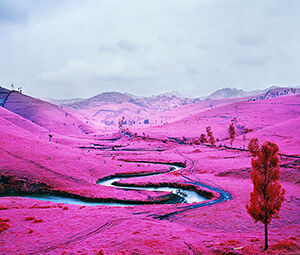This exhibition explored the meaning of shadow in different cultural contexts and determine, through contemporary art, the shared experience and understanding of shadow by disassociating the nationality of the artist from the piece.
Researchers
- Prof. Jiehong Jiang
- Mark Nash
Research background
The venue for this exhibition was the 21st Century Minsheng Art Museum (M21), Shanghai. This museum was established by China’s Minsheng bank. This exhibition received £300,000 core funding from M21 and China Minsheng Bank, £20,000 from Office of Contemporary Art (Oslo) and in-kind support of digital technology from Chronus Art Centre (Shanghai). The issue of ‘shadow images’ requires research as indexical figures that guarantee our humanity. It is also necessary to explore different cultural perceptions of shadows through contemporary artistic interpretations and reflections. In particular, the exhibition considers the use of shadow images since the invention of photography in the 19th century, and recently when our sense of the reality of the material world has been dissolved by digital technologies.
Research aims
The aim of this exhibition was to explore the Chinese term Yingxiang. Yingxiang refers to visual media including both still and moving images produced through traditional or digital techniques can be translated literally as ‘shadow image’ in English. Through this translational and cultural approach, this research-led curatorial project provides a platform inviting artists and curators internationally to revisit the notions of ‘shadow’ in both western and eastern contexts, and to re-examine the ‘shadow’ through literary, artistic and curatorial perspectives. Equally, one of the aims of this exhibition is to de-familiarise artistic practice so one can no longer immediately intuit whether the artist is ‘Chinese’ or ‘Western’. This in turn leads to a more focused aesthetic and curatorial dialogue between the works. The idea was to set up a network of associations and resonances between the different works, so that we avoid reducing our perception of them to the artist’s nationality or location. A more fundamental question is implicit in the title pertaining to the exploration between images and truth.
Research methods
This project was developed from an original proposal invited by Today Art Museum (Beijing) in 2013 for their first triennial. It passed all the panel review but unfortunately, due to the management changes, the proposed triennial did not take place as planned. It was then reviewed and further developed through a number of curatorial discussions externally with international leading curators in the field, including Peter Weibel and Andrea Buddensieg from ZKM Centre for Art and Media (Karlsruhe) and Ute Meta Bauer from Centre for Contemporary Art Singapore (CCA). Artist studio visits were undertaken by the respective curators to the centres of contemporary art, such as London, New York, Beijing, Shanghai, Seoul and Singapore, discussing ideas with artists to engender curatorial development.
Outcomes
The exhibition catalogue was bilingual (English and Chinese) for widest readership possible and published in September 2016 by the prestigious art publisher in China, Shanghai People’s Fine Arts Publishing House.
In terms of artistic outputs, Yuan Gong’s Hamlet-Machine Family Album the artist constructs an installation which functions as a kind of womb, in which the bodies are kept hidden away from view, shrouded under a black tarpaulin to create menacing shapes.
William Kentridge’s Second Hand Reading uses the traditional filmic device of animation to re-create the act of reading (which is also the act of viewing) while at the same time he uses line drawing to represent an avatar of the viewer crossing the pages as they read.
In Platon, Richard Mosse uses a discontinued infrared reconnaissance film to render Congolese vegetation a surreal, purplish-red colour, reflecting bloody conflict of recent years.
Chen Chieu-Jen’s Realm of Reverberations presents views of individual survivors from a 1930s sanatorium for lepers established by the Japanese colonial government in Taiwan, where sufferers from the disease were forcibly interned.
Wang Yuyang’s Light was a site-specific work which attempted to freeze the shadows falling on these glass walls. The shadows were captured in full sunlight, reproduced on giant semi-transparent backlit film in their actual size and mounted back onto the original glass walls.
